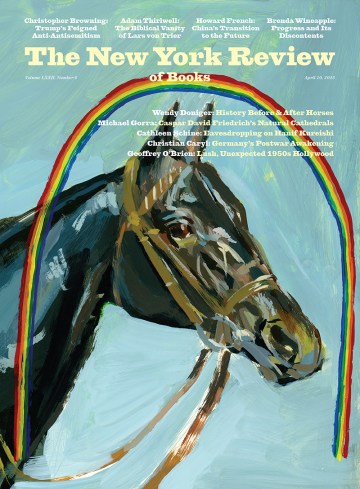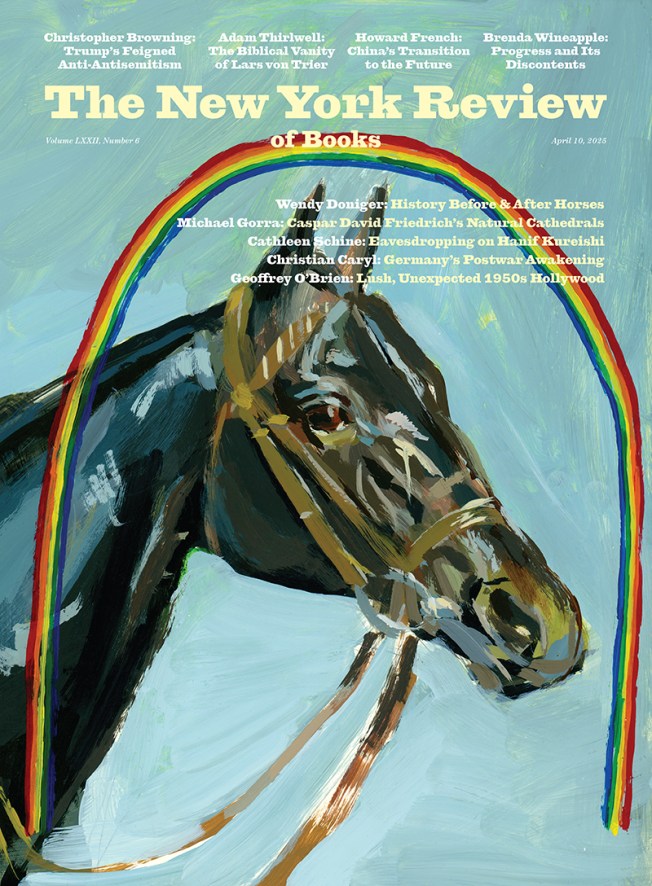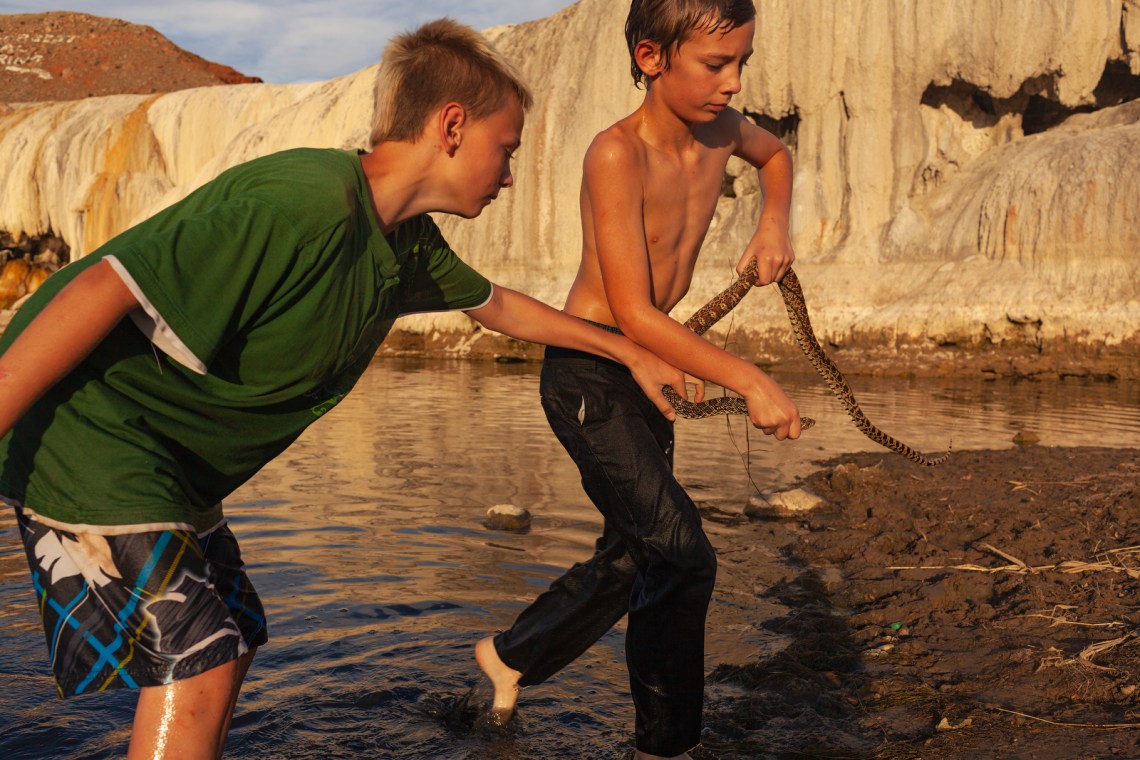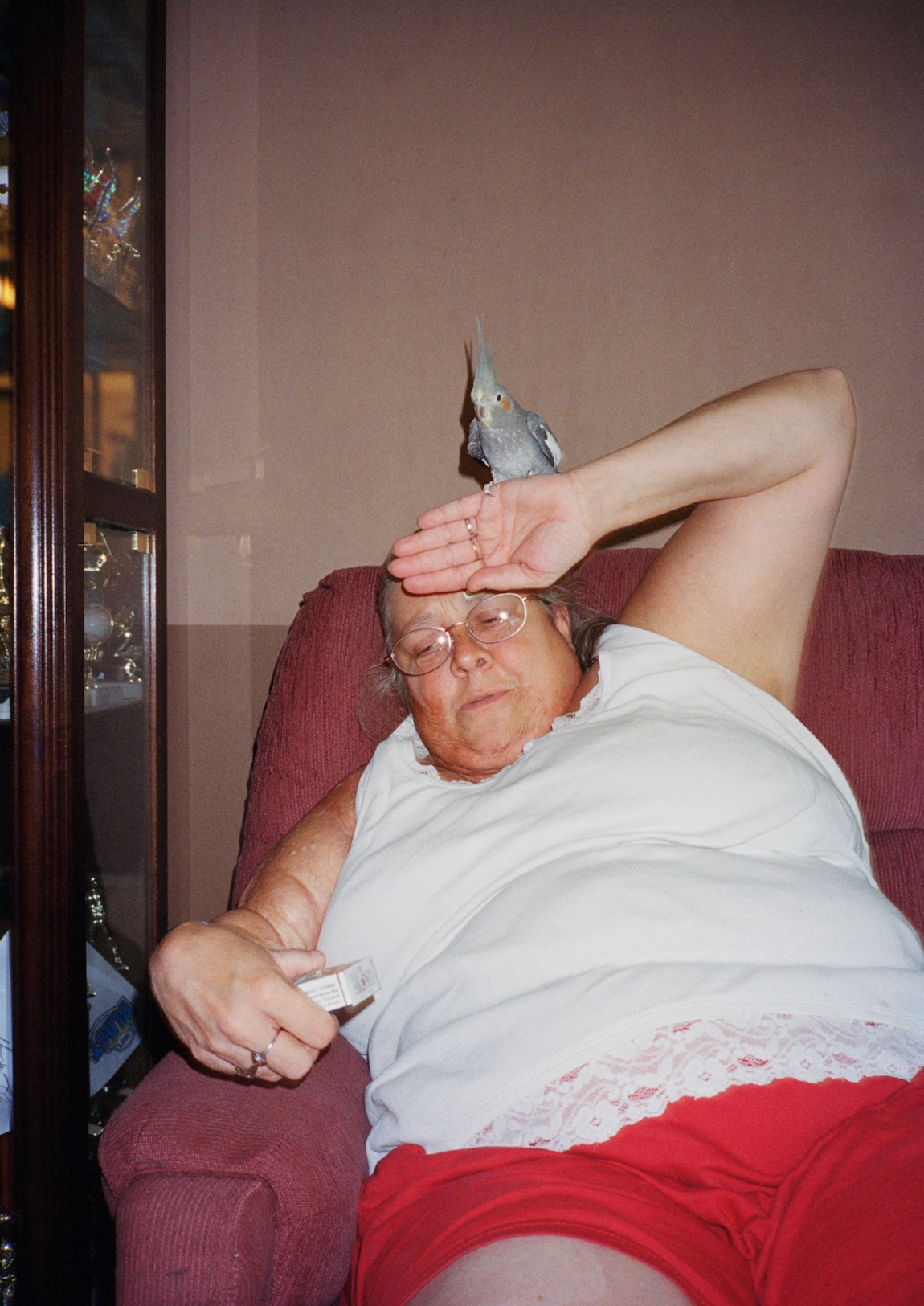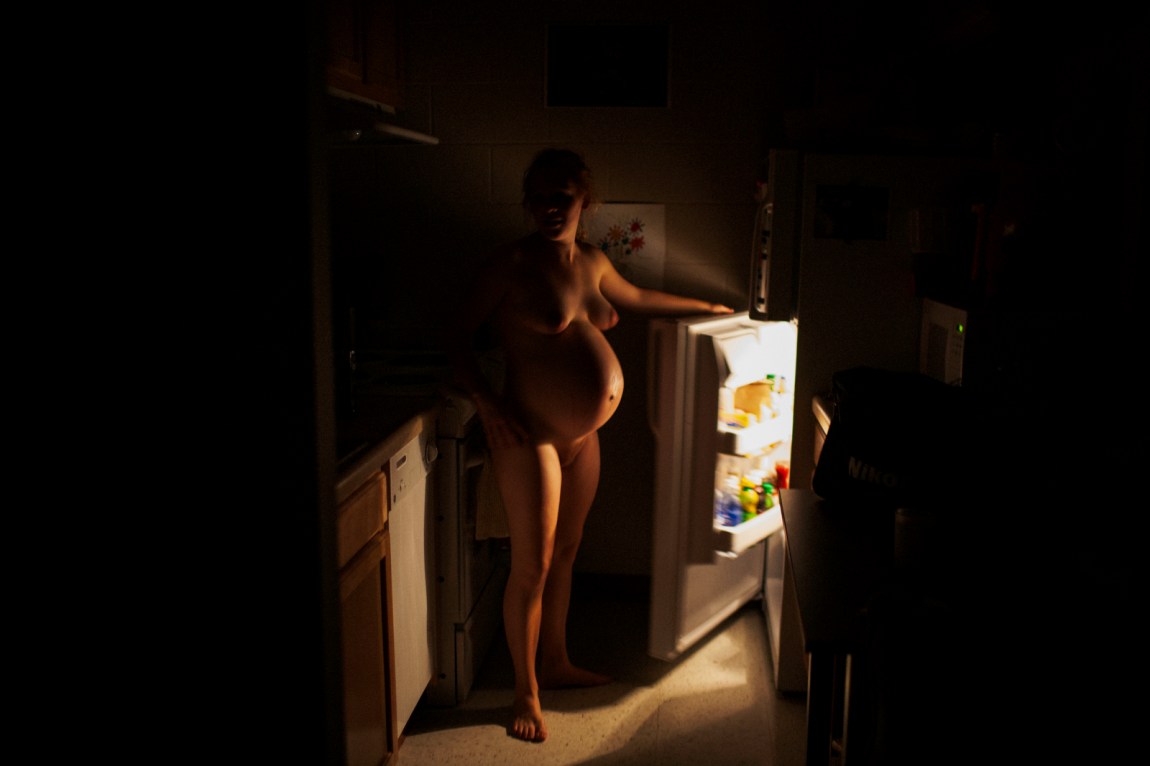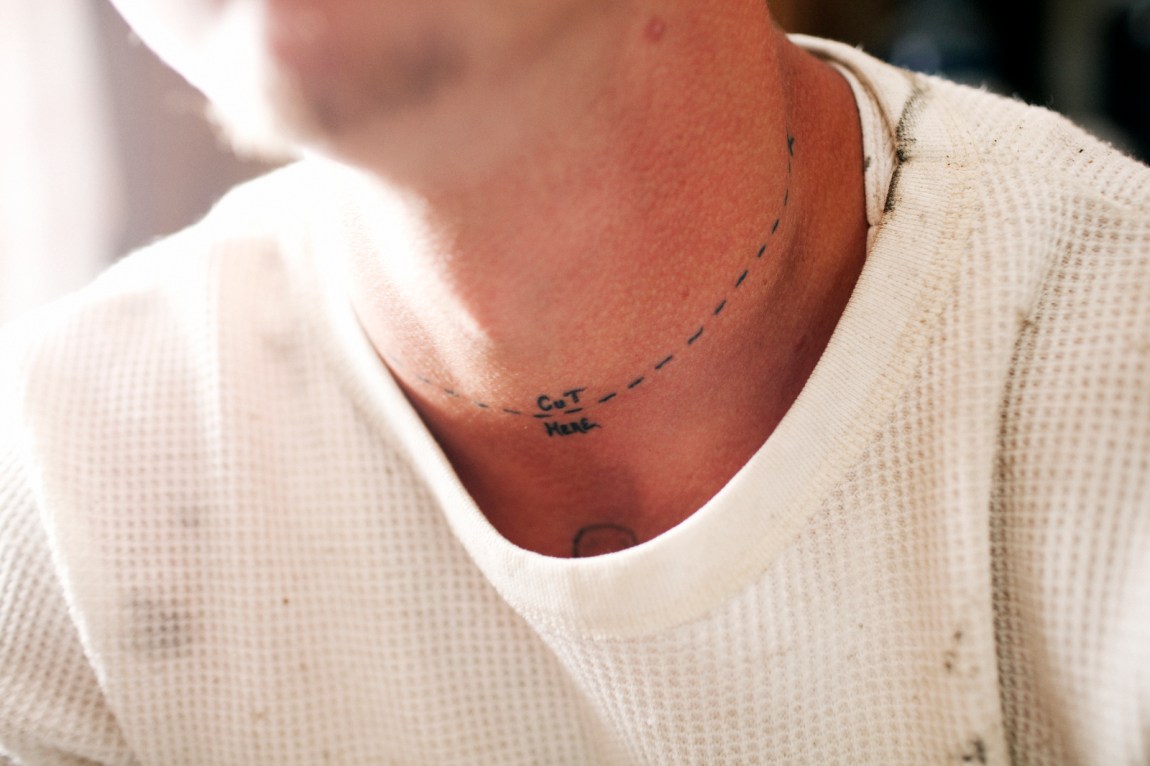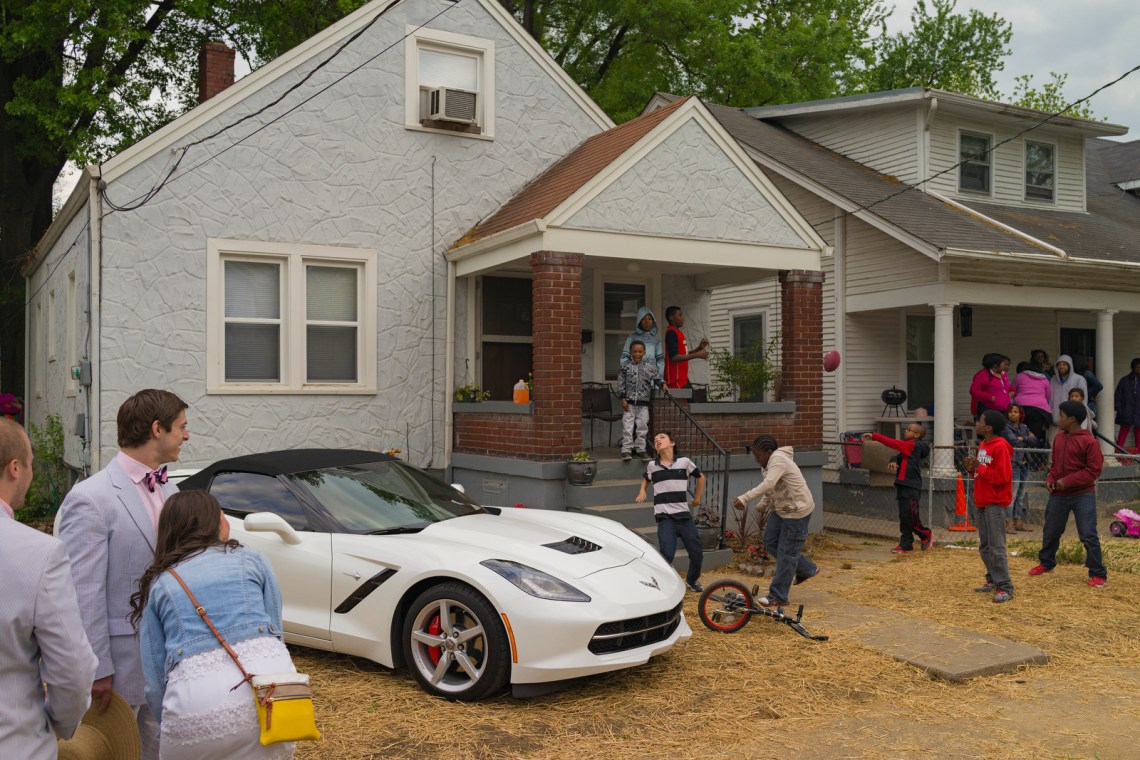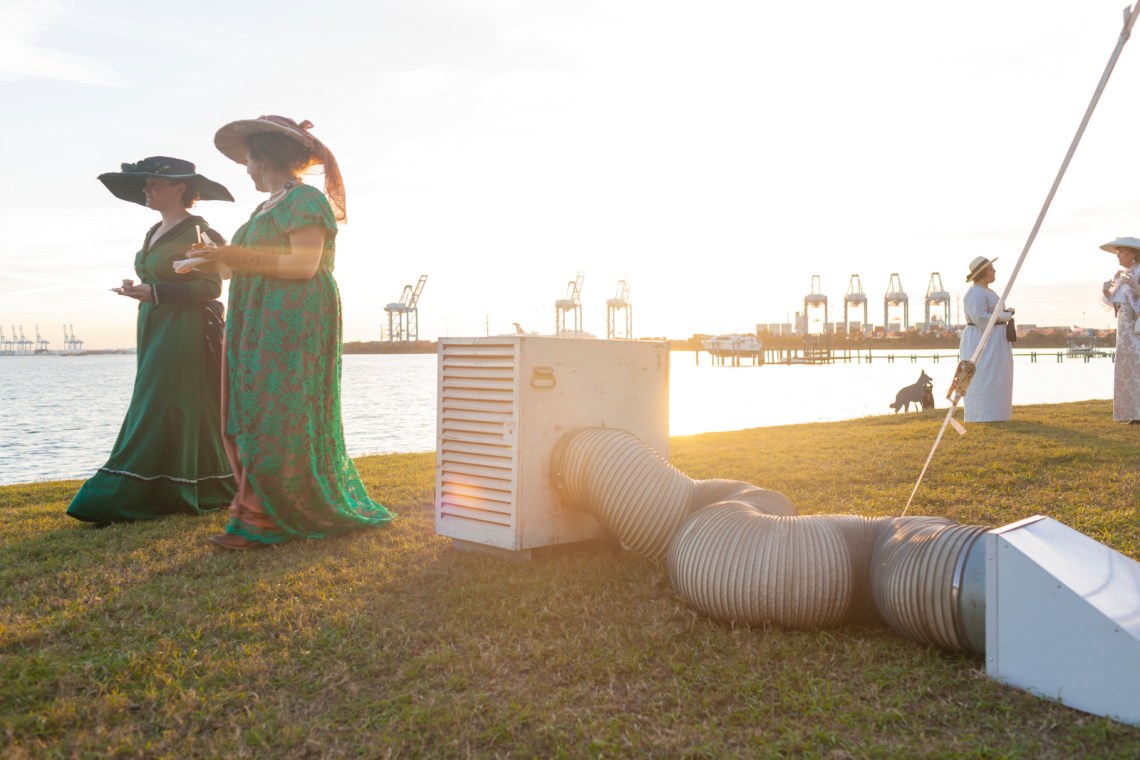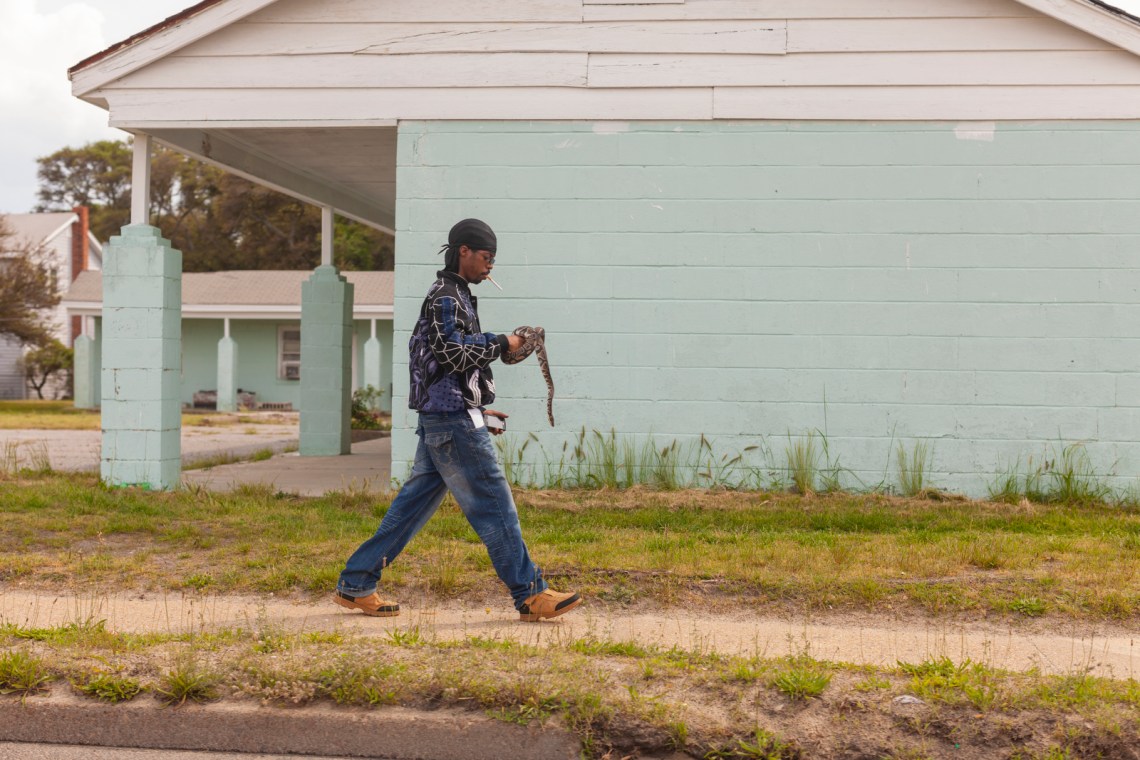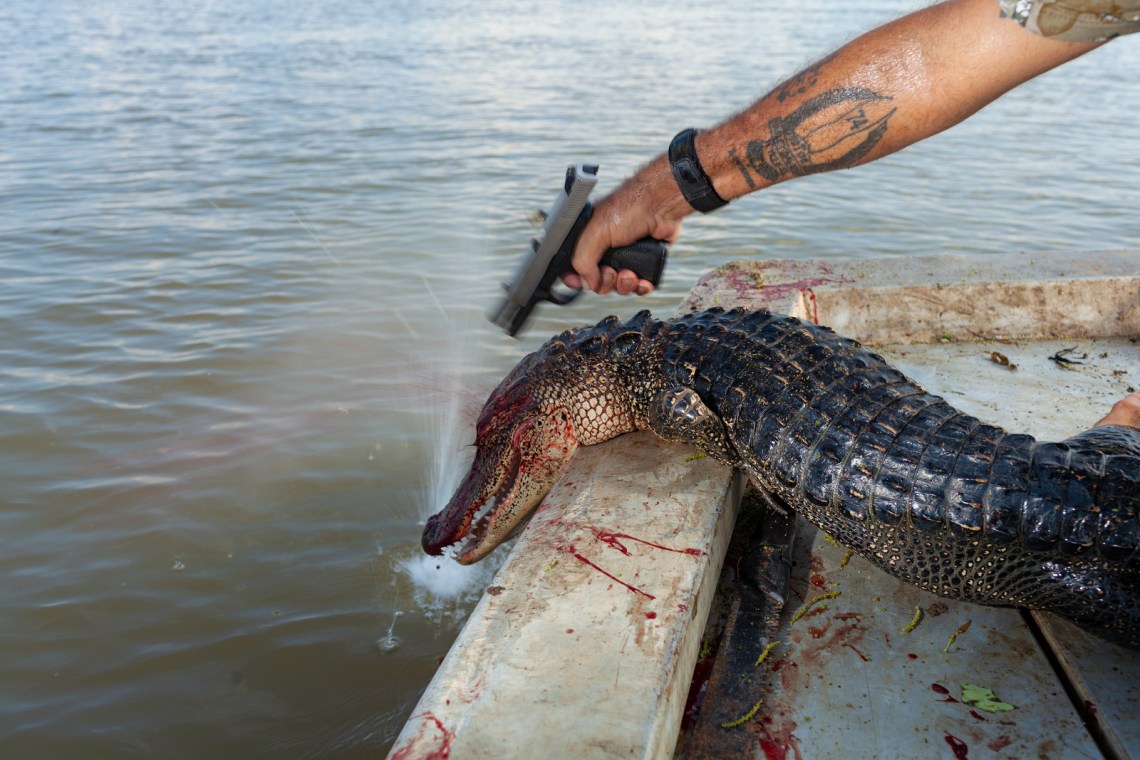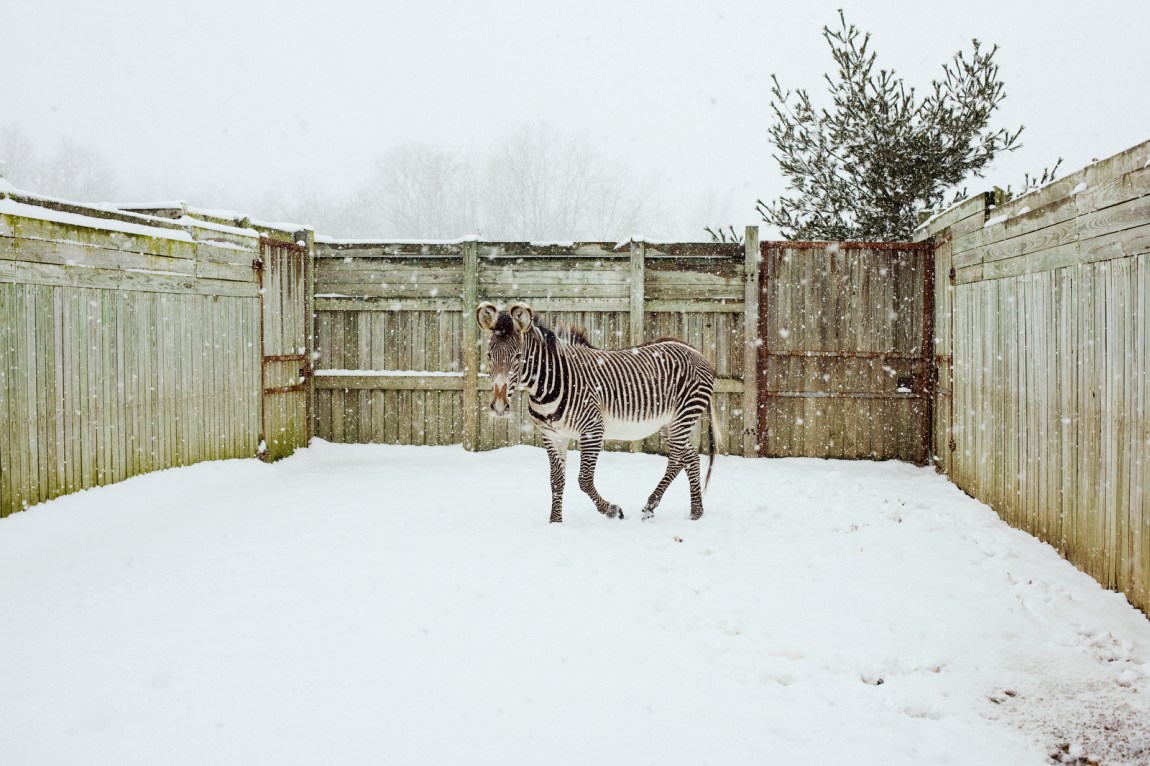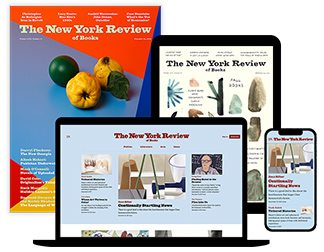The photobook is a strange medium. It combines two technologies—one about as old as Christianity, the other younger than the United States. If photographs did not render the bound codex and its descendants obsolete, as they are said to have done for certain historical functions of painting, a book can nevertheless feel like an oddly ceremonious container for those objects of immediacy we encounter in advertisements and newspapers. They must be read and seen differently. As the critic Ralph Prins argues, the images in a photobook “lose their own photographic character as things ‘in themselves’ and become parts, translated into printing ink, of a dramatic event.” A single picture may capture an instant, but only one; a book of instants achieves the electric current of comparison.
This may explain why so many photobooks about the United States take road trips as their subject. Like the photobook, the road trip is a conjunction of old and new: the pilgrimage and the automobile. With their streams of juxtapositions, the ironies and punchlines of the passing and already past, the road trip and the photobook each take on the punctuative grammar of Burma Shave billboards. They are accumulative. To read Robert Frank’s application for the Guggenheim grant he would use to make The Americans (1958) is to encounter a description of a road trip in miniature. He planned to photograph
a town at night, a parking lot, a supermarket, a highway, the man who owns three cars and the man who owns none, the farmer and his children, a new house and a warped clapboard house, the dictation of taste, the dream of grandeur, advertising, neon lights, the faces of the leaders, and the faces of the followers, gas tanks and post offices and backyards.
From the 767 rolls of film that Frank exposed came three hundred negatives which he arranged into slightly more prosaic categories—symbols, cars, cities, people, signs, cemeteries. After further culling he produced The Americans, a book as unmannered as it is confident, one that seems to contain a critique of the whole country. Frank, a Swiss émigré who arrived in New York a decade earlier, captured the nation’s postwar crises of power and inequality as well as its loneliness and vastness. It is perhaps the most famous American photobook ever published, a vision with which every subsequent attempt must contend.
One recent contender is Matt Eich’s “The Invisible Yoke,” a photobook series that is as bizarre, amused, and dispiriting as its predecessor. Eich has written that its four volumes—which the Swiss publisher Sturm & Drang released earlier this year as a box set—concern “collective memory in the shaping of American identity,” a description that does not quite capture the project’s ambitions nor its urgency. “The Invisible Yoke” is an exorcism of America’s demons. The first three books are “regional microcosms.” Carry Me Ohio (2016) is a study of Appalachian life in a cluster of Rust Belt towns in the state’s southeast. Sin & Salvation in Baptist Town (2018) takes as its subject a dilapidated Black neighborhood in Greenwood, Mississippi. The Seven Cities (2020) is set in a maritime region of military bases and suburbs around Norfolk, Virginia. (Norfolk is home to the country’s oldest Navy shipyard.)
We, the Free (2024) abandons this format and instead features images from across the continental United States, plus Alaska. Although the book’s range owes something to the career Eich has built as a photojournalist filing assignments for The New York Times Magazine and The Atlantic, it is a cohesive, if grim, concluding statement: the culmination of nearly two decades of image-making, and the longest and darkest of the four volumes. In his preface to The Americans, Jack Kerouac wrote that Frank had “sucked a sad poem right out of America on to film.” Eich’s vision is, if anything, bleaker.
*
The very first image in Carry Me Ohio references the road trip legacy of the American photobook. The series opens on a muddy road at sunrise between the towns of Nelsonville and Athens—a far cry from the new interstate highway system Frank enjoyed on his Guggenheim tour. This is a road to get stuck in or lost on, a sessile landscape rather than a medium of travel.
Ohio was a natural starting point. Eich, who was raised among the peanut farms of Suffolk, Virginia, began to conceive the project while studying photography at Ohio University in Athens. He made his earliest photos in rural pockets of Appalachia: trailer parks in coal-mine country, demolition derbies, and bric-a-brac living rooms of the not-well-off that recall Chauncey Hare’s Interior America (1978). An air of stasis and defeat permeates these images, as it does the Sun Kil Moon song from which the book takes its title. Eich’s young family—while in Ohio he married and had a daughter—appear as subjects alongside other families and groups of friends, troubling the distance between documentarian and subject. One of the most arresting portraits in the book shows Eich’s pregnant wife Melissa standing naked in a kitchen, illuminated by fridge-light.
Advertisement
In 2010, on assignment for AARP, Eich arrived in Baptist Town, a neighborhood in Greenwood, Mississippi, divided sharply along lines of race and class. Some months later, after an eighteen-year-old resident was shot and killed, Eich returned to document the funeral, then kept coming back. The photographs in Sin & Salvation in Baptist Town, taken over eight years, deal with acute grief and mundane poverty. Two girls amuse themselves drawing with chalk on a piece of cardboard in a bedroom of Dickensian shabbiness. Men drive junkers and boys dream on unmade beds. White people appear exactly once, in a photograph of a city council meeting held in a wood-paneled room that exudes power and wealth. The volume expresses an extreme instance of a general principle: “The Invisible Yoke” depicts a nation nearly as segregated as the one Frank explored more than a half-century ago. Except for images of military recruits, church pews, and large crowds—and of white police officers arresting Black men—there are almost no photographs in which Black and white people appear together.
In an afterword to Sin & Salvation, Eich identifies the “sins” of the title as his own, including the folly of his ambitions to document and, through his work, alleviate racial disparities. There is, perhaps, a moralizing tendency in the book that is mercifully absent in the other volumes. On the contrary, Eich’s images, not to mention the grammar of their juxtapositions, are elsewhere beguilingly enigmatic. A smiling farmer convenes a quorum of pigs. A pink cloud of paint hovers before a Confederate monument. A neck tattoo instructs: “CUT HERE.” Eich’s portraits capture the enchantment of unreadable gazes and impenetrable gestures. To see them is to know less about a place rather than more. A boy sits on a bare mattress with his big toe in his mouth.
Eich does not stand at much of a remove from his subjects. He ingratiates himself, as evident by his presence at swimming holes, baptisms, parties, comedowns, and wakes. One does not wonder—as one is these days often made to wonder—about the consent of the photographed. Some subjects appear in images taken years apart and a few even speak for themselves in unbound booklets that are included in the first three monographs. “Leaving is the safe way out, but prison and death are more common,” says Dash Brown, a recurring figure in Sin & Salvation.
Eich draws inspiration from the documentary intensity of Eugene Richards, a chronicler of suffering whose depictions of the downtrodden are stripped of all sanctimoniousness. With discomforting intimacy, Richards shows his subjects, from drug addicts and asylum inmates to stab wound victims, at their lowest moments. But Eich has also cited more benign influences, including the conceptual photographer Larry Sultan and fellow Virginia native Susan Worsham. This is clearer in the later volumes, which move away from familiar documentary tropes and toward more peculiar visions: blurred figures of deer crossing a road at night; mermaids and turtles in an underwater kingdom; a Mississippi field on fire followed by a tunnel of Virginia ice.
The Seven Cities brings Eich’s attentions to his own town of Norfolk, where scenes of economic and military life serve as interstitials between photos of his parents, wife, and children. There are oystermen at work, Navy sailors celebrating Fleet Week, and manicured homes—a stark departure from the poverty of the early books. All of it, however, is recognizably American: paradoxical, tragicomic, prefabricated, new. There is ruin but no ruins, nothing to suggest the weight of history. In one image, dignified women in wide-brimmed hats attend an old-fashioned Chesapeake garden party before a phalanx of gantry cranes. In another, a group of costumed reenactors—they seem to include founding fathers and a slave—perform for Williamsburg tourists who wear t-shirts and sunglasses.
Like Carry Me Ohio, We, the Free opens on a road, this one in West Virginia and filled with perfectly round potholes that call to mind crop circles. Over ninety-one images, we are driven all over: Alaska, New York, California, a naturalization ceremony in Charlottesville, the Kentucky Derby, a football game, Trump’s first inauguration. The result—especially compared to the three place studies preceding it—is a consciously disaggregate medley, off-putting and even kitsch: one thinks of Elvis, sweat drenched, singing “An American Trilogy.” It is the closest in spirit to Frank’s cacophony of place, evidence of a nation’s derangement. The four-book series ends back where it started, in Athens, Ohio, with an image of Eich’s wife and his oldest daughter, seen through a car windshield, pensive and partly obscured.
Advertisement
*
“The Invisible Yoke” documents a period between 2006 and 2018, but the books appeared between 2016 and 2024, what we might now describe as the early Trump era. The same month Eich took the photograph of the road outside Nelsonville, a nationwide poll showed, for the first time, a long-shot outsider candidate beating Hillary Clinton. The following year, a graduate of Yale Law School born about 150 miles from Nelsonville would publish a memoir about the approximate region Eich was documenting.
Trump himself appears only once in the series, on a Jumbotron screen in Washington D.C., where he stands together with (and blocking our view of) Barack Obama. It would be temporally inaccurate to call The Invisible Yoke a bookmark of the Trump turn, or a rebuttal of J.D. Vance’s bootstrap myth-making, but photography is often drafted into a larger battle of history. One can’t help but see a panorama of an unraveling country: the downwardly mobile white and Black working classes, the military, the guns, the drugs, the hoarded wealth.
“The Invisible Yoke” also takes special interest in our disconnection from the natural world. The Ohio prairie is an open-pit wasteland. The mouth of the Chesapeake is filled with warships and industry. In Missouri a tornado-ravaged tree supports a tattered American flag and a cross. Eich also loves pairings of humans with animals who enact cliches of atomized social life—“crabs in a bucket,” “sick as a dog”—or invent new conceits that seem already familiar. Throughout the books are snakes, sometimes being charmed or captured (or, in one case, skinned) by children, and if they do not quite say “Don’t tread on me” they produce the same feeling of libertarian alienation as the Gadsden flag.
In Another Way of Telling, his text-and-image collaboration with the photographer Jean Mohr, John Berger contrasts narrative photography from works of photojournalism.1 Both use photos in groups or sequences, but the latter depend on words “in order to overcome the ambiguity of the images,” he writes. “In reports ambiguities are unacceptable; in stories they are inevitable.” Even when the subjects themselves are given space to speak, Eich’s images refuse to converge on a single meaning. They remain semantically open, like certain jokes. A woman on a couch grasps a pack of cigarettes in one hand and with the other salutes, a parakeet perched on her palm. A man studies a chicken in his living room with something like concern. An alligator is shot in the head at close range, its brains exploding into a river, firearm at the edge of the frame.
Some of Eich’s photographs are so bizarre that it would be a pity to explain them. In an image near the end of Carry Me Ohio, a zebra walks in a fenced yard as snow falls. The ground is white; the trees beyond the fence suggest deep winter. Internet research suggests that the zebra’s name is Elvis and the yard adjoins 10,000 acres of a reclaimed strip mine in Cumberland, Ohio, that is now a research center for endangered animals. But no explanation can displace the viewer’s first impression that a wild creature has been enclosed, unnaturally and cruelly, in a suburban backyard.
